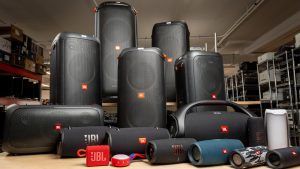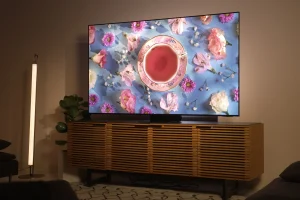Is your new TV, monitor or projector bright enough?

Why is it important to know display brightness?
The brightness of a TV, monitor or projector is a measure of how much light the display emits. It’s an important characteristic to consider because it directly affects the quality of the image, especially if the room you’re in is very bright or very dark.
You can adjust the brightness of your monitor to enhance what you’re watching or playing, but you can’t adjust those brightnesses beyond what your monitor is capable of. Knowing the brightness range of your monitor means you’ll never be disappointed when you’re watching different types of content. Take HDR (High Dynamic Range) content, for example.HDR is popular in video games or movies, and it requires higher brightness to render the best quality.
Factors affecting your perceived brightness
In addition to measured brightness levels, there are a number of other factors that can affect how you perceive your new monitor.
The amount of natural light in the room:In a room with lots of windows and natural light, some displays may appear dull or faded, but in a dark room, the same displays will appear bolder and brighter.
Angle of the display:The angle at which you look at your TV or monitor affects your perception of brightness. If you stand next to it, it will look different and appear darker than when you stand in front of it.
Distance between you and the monitor:If you have a very large room with a small TV and your couch is at the other end of the room, the TV may look dark and washed out. The distance between you and the TV or projector screen affects the brightness of the picture.
Your eyesight:If you have poor eyesight and find it difficult to look directly at bright light without averting your eyes, or if no matter what you look at, you find everything dark, it may be difficult for you to accurately assess the brightness of your monitor.
How do I measure the brightness of my monitor?
Before we discuss the different brightness levels of a TV, monitor or projector, you need to understand how the official specifications for these products measure display brightness.
1. it or candela
Display brightness is measured using a measurement called “nits”. One nits, also known as candelas per square meter (cd/m²), is basically the same thing – one nits equals one candelas per square meter. Nits are measured with a photometer or colorimeter. This tool measures the amount of light emitted by your monitor and uses it to calculate the brightness in nits. The only thing to keep in mind is that, depending on the type of TV, monitor, or projector you’re looking at, each model can have a range of brightness. For example, a mid-range QLED TV might have a brightness of 500 nits, while a high-end model could be as bright as 1,500 nits.
2. Lumens
“Lumens” is another term that describes the amount of light produced by a light source. Like nits, lumens are measured using a light meter. This term is most commonly used to refer to the brightness of a projector; while the brightness of TVs and monitors is usually expressed in nits.
3. Brightness
In a television, monitor, or projector, brightness is the amount of light produced, reflected, or transmitted in a particular direction from the surface of the display. For example, the brightness and contrast of your favorite TV program may seem brighter if you are standing in front of the TV, and darker if you are standing next to it. The light in the room doesn’t change, but the brightness you perceive is different, depending on the light coming from that direction.
Brightness is measured in nits or candelas. High-brightness TVs, monitors, or projectors make the picture easy to see from all angles, so they’re a good choice for rooms with lots of windows or natural light. If your room is dark, you may want a monitor with a low brightness because it’s a little easier on your eyes.
Typical Brightness Levels for TVs, Monitors, and Projectors
Once you understand brightness and how it’s measured, it’s also helpful to know the baseline brightness of several different types of TVs, monitors, and projectors.
TV Brightness Range
Here are some references you can use to determine which TV brightness (in nits) is best for you. The TV Buyer’s Guide can help you narrow down which TV to buy to meet your needs.
CRT TVs- 100 to 300 nits
A few years ago, a TV screen was housed in a large box that took up almost as much space as your parents’ comfort chair. These types of TVs were CRT TVs (cathode ray tube) and they had an average brightness level of 100 to 300 nits.CRT technology was also used in older computer monitors.
LCD TVs – 200 to 400 nits
LCD TVs appeared in the 1990s. This type of TV uses cold cathode fluorescent lamps (CCFL) as a backlight and liquid crystals layered between two sheets of glass. These TVs have a brightness of 200 ~ 400 nits.
LED TVs – 2000 nits on average
LED TVs replaced older TVs







